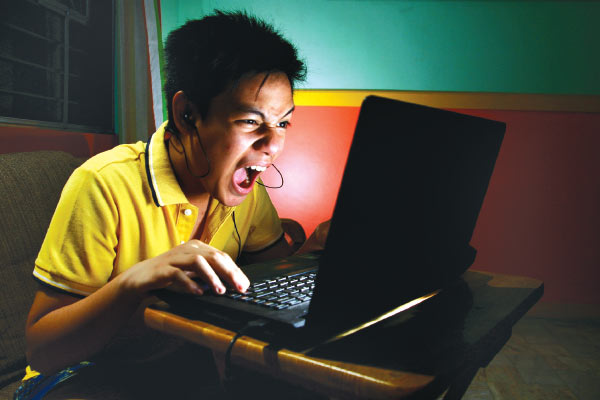Dr Jinan Harith Darwish is a paediatric allergy specialist and clinical immunology fellow at the King Faisal Specialist Hospital & Research Center. Each month she answers your parenting questions.
Q: My seven-year-old daughter keeps getting nosebleeds. They come on out of nowhere and, though sometimes they stop quickly, often the bleeding seems to go on for a long time. Friends have suggested holding her head back, but this just makes her sick. Others say she needs surgery. Overall, I’m worried for her as she finds these incidents frightening. She is otherwise fine and healthy. What could be causing these bleeds and what should I do about it?
A: Epistaxis is common in children. Nonetheless, frequent minor nosebleeds can be both bothersome and alarming for parents and children. Common causes can include uncontrolled allergies; dry, irritated mucous membranes in her nose; sinus infections; trauma and frequent nose picking. Much more rarely, bleeding disorders or high blood pressure could cause frequent nosebleeds.
If dry air is the reason, in addition to a humidifier, it may help to use a saline moisturising nose spray and/or a nasal gel or Vaseline on a regular basis to keep your daughter’s nasal passages from getting dry and irritated. While treating allergies should help, do keep in mind that a bloody nose can be an uncommon side effect of using nasal steroids. And, even if your child denies picking his/her nose, keeping their nails cut short might be helpful if they are having regular nosebleeds – just in case. For more significant or recurrent epistaxis other techniques might include vasoconstrictor nose drops, cautery with silver nitrate, topical sealants or glue, nasal packing or balloon catheters.
Q: My teenager seems tired all the time. He has a pretty healthy diet, though I’m sure he does manage to fill up on junk food when he’s out of the house. Unfortunately, despite encouragement, he’s not very active and spends a lot of time on his computer which I’ve told him is not good for him. At the weekends, he will be online gaming until the early hours and then we don’t see him till the next afternoon and he spends all his time slouching around. If lifestyle is the problem, I plan to show him your answer.
A: Both The Australian guidelines and US Department of Health and Human Services recommend children aged five to 18 years have at least 60 minutes of moderate to vigorous physical activity daily. For many adolescents, this physical activity doesn’t just happen – it needs to be planned. It is key to persuade your son to partake in physical activities that are enjoyable, suitable for his age, and that offer diversity with at least three days per week of aerobic vigorous-intensity physical activity, muscle-strengthening physical activity on at least three days of the week and bone-strengthening physical activity on at least three days of the week.
Moderate activities in general should make him ‘huff and puff’ a little bit. These could include brisk walking, bike riding, swimming laps of a pool and jogging. Even helping out with some of the more active chores inside and outside your home can be good for both of you.
Vigorous activities increase your teenager’s heart rate and make him ‘huff and puff’ even more. This can happen in any game with lots of running – for example, football, tennis, squash or basketball.
According to Australian government guidelines:
– children aged five to 12 years should spend no more than two hours a day using electronic media for entertainment (computer games, internet, TV), especially during daylight hours.
– children aged 12-18 years should spend no more than two hours a day using electronic media, unless it’s for educational purposes.
If you have a question for Dr Jinan, please email editor@redhousemarketing.com





































